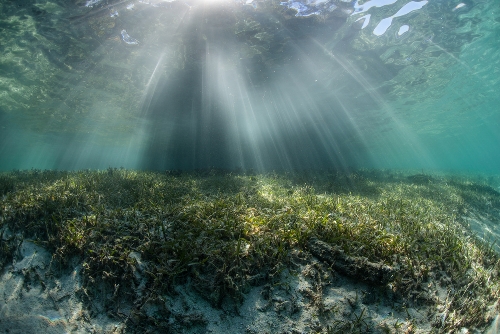Grass Roots Biology

Home to myriad species and acting as massive carbon sinks, seagrass meadows are key marine habitats – but they are disappearing fast, reports Xaali O'Reilly Berkeley
The Biologist 62(6) p16-19
Seagrasses are a group of flowering plants adapted to live in salt water. They grow, flower and pollinate completely submerged in estuaries and along shallow coastal waters around the globe, both in temperate and tropical environments.
Although they physically resemble grasses and grow in large expanses called meadows, the term seagrass actually refers to the ecological niche the plants occupy rather than a taxonomical group. There are four different families of seagrass, all thought to have adapted to their marine and estuarine lifestyles independently from one another.
Together, they form the foundation of one of the most productive ecosystems on Earth and cover somewhere between 300,000 and 600,000 square kilometres of seabed. Yet many people have never heard of them.
Want to continue reading this article?
Click to login.


